Graphite from the Louis Coupal Prospect, Arundel, Argenteuil,
Quebec, Canada
| Graphite Bireflectance:
|
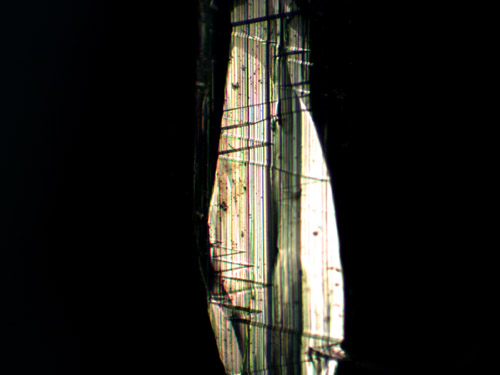 |
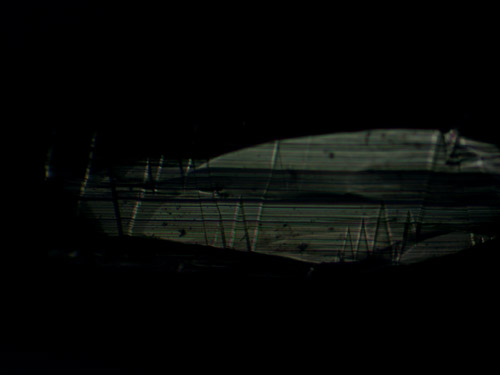 |
Edge-on view of a 0.5-mm thick graphite
crystal in linearly-polarized light
with the light's polarization vector
parallel to the graphene sheets. |
Edge-on view of graphite with light's
polarization vector perpendicular to the
graphene sheets.
| |
| John A. Jaszczak collection (1943g) and photos. |
| Graphite Kink Bands:
|
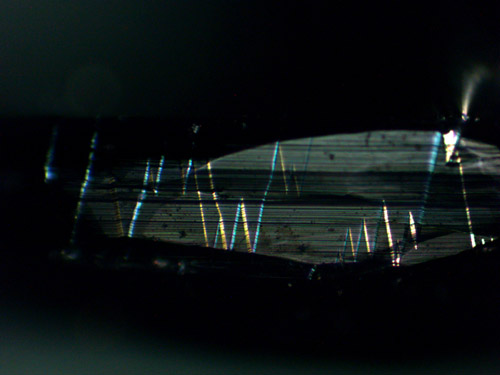 |
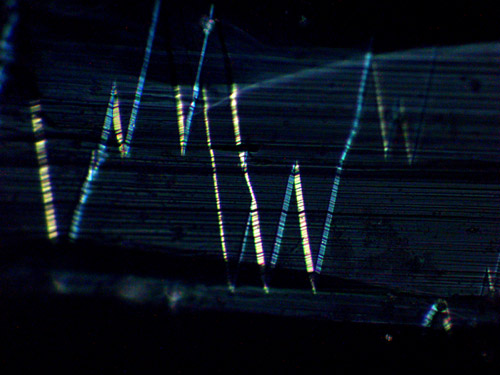 |
Edge-on view of the same graphite crystal as above
with the analyzer and
polarizer crossed. Kink bands, which are visible as yellow or blue lines
traversing the crystal, are mechanically formed twin domains. The crystal
is aligned such that most of the graphene sheets are in extinction, but
the kink bands are paralell to neither the analyzer nor polarizer and
illustrate graphite's reflectance dichroism (Peckett 1992).
|
| John A. Jaszczak collection (1943g) and photos. |
Graphite crystals from this locality can be exceptionally well formed, and can range in size from 1mm to 3 cm across.
Many of the smaller crystals can be relatively thick and show lustrous striated prism and other non-basal pinacoid faces. The crystals occur in a coarse-grained greenish calcite, and are easily exposed by etching in dilute HCl.
Large concentrations of vein-type graphite with banded and botryoidal textures also occurs at this locality.
Digital images taken using a PAXcam2 digital camera on a Nikon OptiPhotPol microscope.
References:
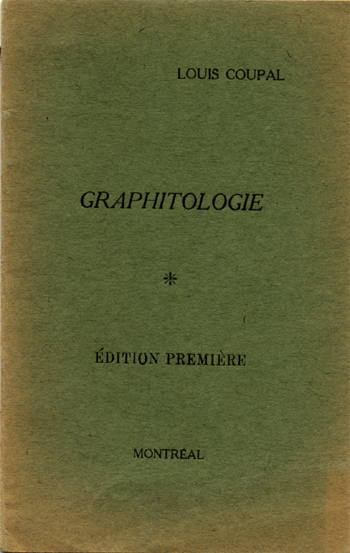 Coupal, Louis. Graphitologie. (Montreal, 1920). [In French].
Coupal, Louis. Graphitologie. (Montreal, 1920). [In French].
Peckett, Andrew. The Colours of Opaque Minerals. (John Wiley & Sons, 1992).
 Back to Jaszczak's home page
Back to Jaszczak's home page
 Back to Graphite Page
Back to Graphite Page
 Coupal, Louis. Graphitologie. (Montreal, 1920). [In French].
Coupal, Louis. Graphitologie. (Montreal, 1920). [In French]. Back to Jaszczak's home page
Back to Jaszczak's home page Back to Graphite Page
Back to Graphite Page